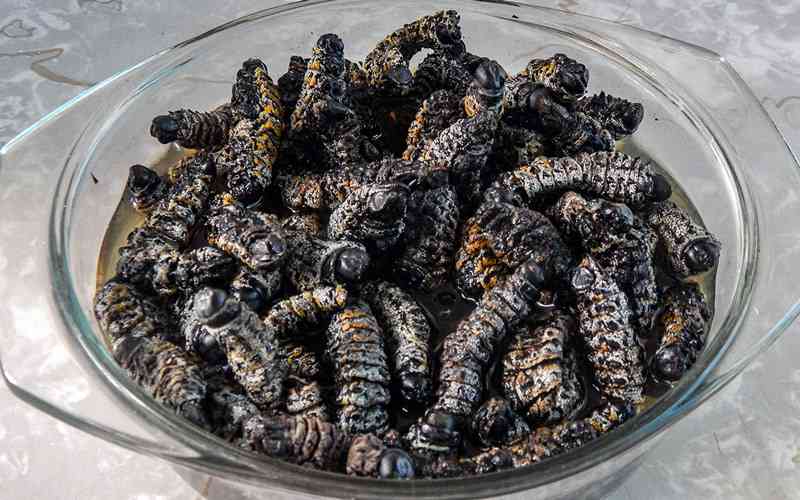
POOR Zimbabweans are now turning to the popular “mopane” worm or amacimbi/madora for sustenance as traditional farming opportunities decline.
Recent research from the United States Agency for International Development (USAid) food security arm, the Famine Early Warning Systems Network (FewsNet), found that most of the southern, eastern, and western areas have experienced prolonged dry spells.
As a result, traditional income-generating activities such as selling vegetables and fruit, barter trade, and casual labour have been on the decline.
“Across Zimbabwe, some poor households are engaging in petty trade and casual labour to earn income and collecting and selling seasonally available wild foods. Since December, households have been harvesting, selling, and consuming mopane worms, also known as ‘amacimbi’ or ‘madora’, particularly in the southern and western districts,” the latest food security update from FewsNet read.
“The highly-nutritious and popular worms are reportedly available in near-record amounts this year. The availability of seasonal domestic and wild fruits and vegetables is also supplementing household food consumption in some parts of the country. Households are also increasing livestock sales with the start of the new school year.”
FewsNet said as demand for cereals increases through the lean season, market supply is declining, particularly in most deficit-producing areas owing to a weakening local currency.
“This has increased prices in some monitored markets by up to 20%. The demand for maize meal is also increasing, with imported brands remaining available, especially in some southern areas, despite the import ban in November 2022,” FewsNet said.
Meanwhile, around 700 000 poverty-stricken Zimbabweans have been assisted with food aid by World Vision (WV) with the support of the World Food Programme (WFP).
- Mbavara eyes to resurrect Matavire’s music legacy
- Zim exiles panic over SA permits
- Zim exiles panic over SA permits
- Social media platforms should act on hate speech
Keep Reading
Speaking at a lean season response meeting last week, Public Service, Labour and Social Welfare minister Paul Mavima said: “It’s the government of Zimbabwe’s primary priority to reduce food insecurity, but we cannot do it alone. It has been made possible by the financial support from USAid Zimbabwe and key partners like World Vision Zimbabwe on the ground.”
In a related development, USAid says it has poured US$100 million towards emergency water, sanitation and hygiene programmes.
“A lot of it goes into emergency programming,” Humanitarian Assistance and Resilience Office director Marialice Ariens told NewsDay.
USAid has also availed US$36,7 million through WFP this year towards supporting food-insecure households in the country’s urban and rural areas at the peak of the lean season.
USAid Humanitarian Assistance and Resilience deputy office director Ahmadou Ndiande said: “We have funded WFP to the tune of US$36,7 million to respond to food insecurity through this lean season activity and one of the reasons we are visiting is to see how this assistance is actually happening in the field and how people are receiving and what kind of lessons we can learn from those distributions.”
The lean season is the critical time between planting and harvesting when food stocks dwindle.










